The handheld transceiver (HT) is likely a new ham’s first radio. This VHF/UHF rig is relatively inexpensive, compact and fairly useful for local communication via repeater or simplex operation.
Unfortunately, HT performance is typically limited by its low power and cheap factory antenna.

There are three easy ways to improve the HT antenna. These ideas are from our post on Understanding Antennas but we wanted to elaborate a bit on them here.
The first improvement is to get a 2m ¼-wave or 5/8-wave whip antenna.
This 2m ¼-wave whip is much longer (~19″) compared to the factory antenna but gives dramatically better performance (roughly equivalent of 5x power):
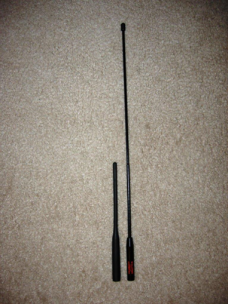
This telescoping 5/8-wave whip should (in theory) perform better than the ¼-wave monopole (shown with 5/8-wave mobile whip):
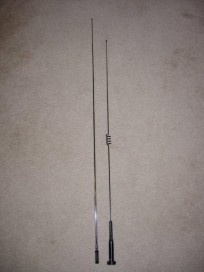
These two antennas can be purchased new in the $20-30 range; well worth the money.
While the antenna can be improved with a longer whip, vertical monopole performance is also limited by the HT’s indirect ground plane.
The counterpoise that makes the vertical monopole behave like a λ/2 dipole on a HT is the operator’s body. It is capacitively coupled to the ham’s body through the plastic case and metal shell around the RF circuitry.
This indirect counterpoise coupling is not only weak but also highly variable and unpredictable.
The good news is that we can improve the counterpoise simply by adding a wire to the HT antenna connection.
By connecting a ¼-wave wire (~19” for 146MHz) to the antenna connector outer terminal, we create a physical counterpoise in place of the indirect ground plane through the operator’s body.
This gives superior performance under difficult conditions and is easy to do.
These physical counterpoise wires are known as rat tails or tiger tails due to their appearance.
Rat tail counterpoise installation is quick and easy. Simply unscrew the antenna, slip the rat tail over the connector and re-attach the antenna
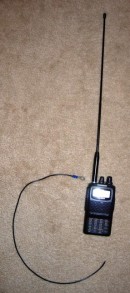
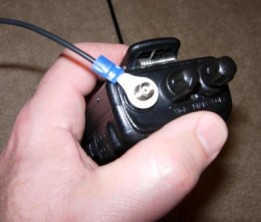
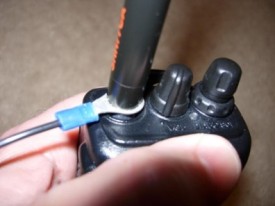
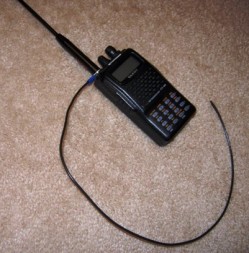
The rat tail can simply hang down in a gentle arc where it won’t be much in the way of anything. Even better, you can hold the wire out in the direction of communication. Gain/directivity is achieved Continue reading










 The appeal of a HT is in its relatively low cost plus its obvious portability. Some new hams want to spend as little as possible to get started in amateur radio and new HTs can be had for less than $50 (although not recommended by experienced hams). Other new hams get started with a local emergency communications group which uses them. Still others simply want a radio for keeping in touch with others while hiking or some other outdoor activity.
The appeal of a HT is in its relatively low cost plus its obvious portability. Some new hams want to spend as little as possible to get started in amateur radio and new HTs can be had for less than $50 (although not recommended by experienced hams). Other new hams get started with a local emergency communications group which uses them. Still others simply want a radio for keeping in touch with others while hiking or some other outdoor activity.